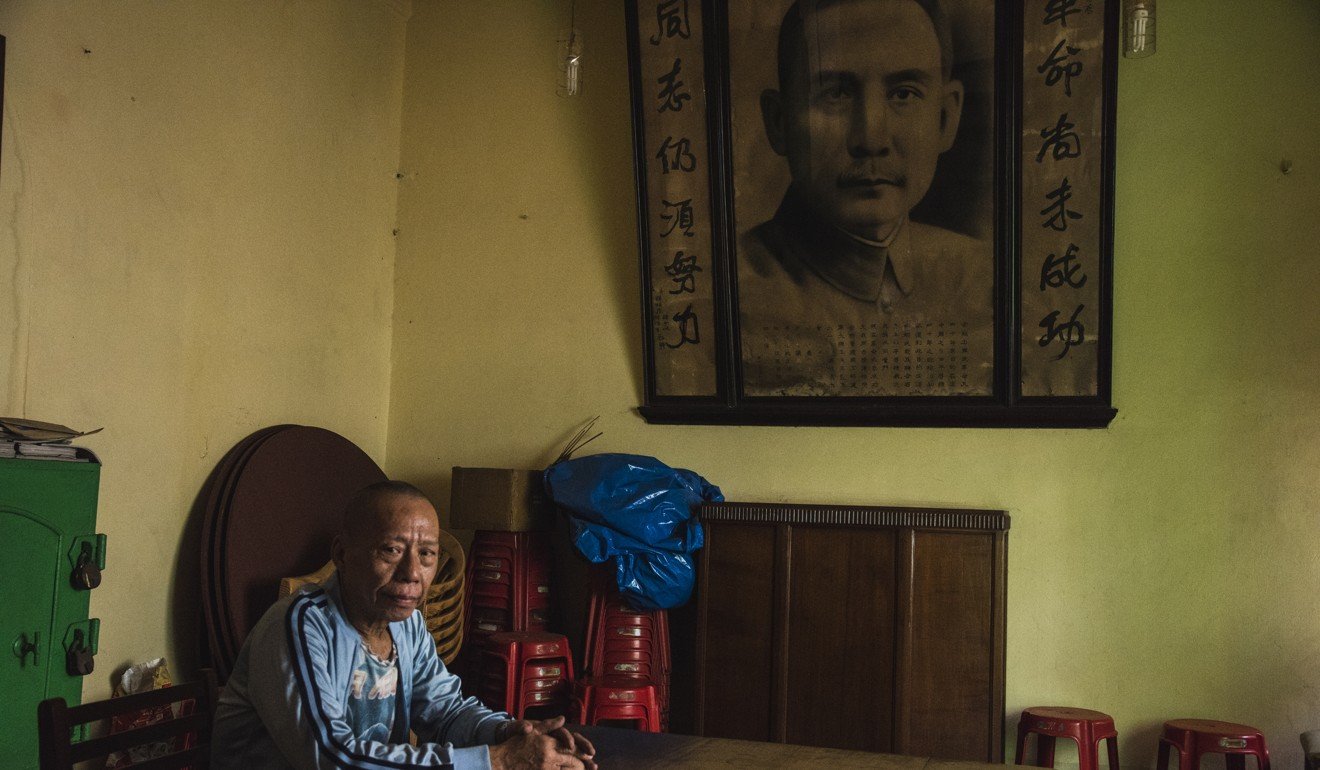
Chinese Indians take comfort in mahjong as Kolkata Chinatown shrinks around them
- They chat in fluent Bengali, but the players around a mahjong table in Tiretta Bazaar, one of two Chinatowns in Kolkata, India, are ethnically Chinese
- Once home to 20,000 – migrants from Guangdong, Shandong and Hubei in China – Tiretta nowadays is a place of run-down buildings, chipped paintwork, and dust
“Do you know how to play Chinese rummy?” asks an elderly man who introduces himself as Mr Sun, flashing a grin.
He continues stacking mahjong tiles neatly on the mosaic table. “It’s just like Indian rummy, but with pretty Chinese figures.”
In the dim yellow light, four pairs of hands circle the upside-down tiles, their symbols hidden like dominoes, picking out a stack for themselves and then looking to see whether they have a matching sequence. Tumblers of milk tea appear.
Around the room, teak chairs, old mirrors and a shrine gather dust, while cats roam aimlessly. Then, with a roll of dice and the flip of stacked tiles, the game begins.

The mahjong club offers a sense of belonging to those huddled around its tables, who chat not in any Chinese dialect but in fluent Bengali. Some are spectators; others are lifelong players.
The club is in Damzen Lane, a main artery of Tiretta Bazaar, which is home to India’s largest Chinese population – a community that at its peak was 20,000 strong. It was founded in the mid-19th century and has occupied its current premises since the 1930s. Today only about 2,000 remain.

The first Chinese entrepreneur known to have arrived in Kolkata, once the capital of British-ruled India, after colonisation some 230 years ago was Tong Atchew, a tea trader.
Records show that a gift of tea offered by Tong won the favour of Governor-General Warren Hastings, who granted him land along the banks of the Hooghly River to set up a sugar mill. So began the city’s long association with Chinese immigrants.
Kolkata is one of the few cities in the world to boast of two Chinatowns. These enclaves, Tiretta and Tangra, once swelled with Hakka Chinese, and migrants from the provinces of Guangdong, Shandong and Hubei. Their number rose exponentially after the Japanese invasion of China in 1931 and the Chinese civil war that followed the end of the Sino-Japanese war in 1945.

They came to work in textile mills, at ports or on tea plantations, and some established their own pockets of trade. They adapted and assimilated.
Walking through the back alleys of these neighbourhoods today is like stepping back in time. Old Chinese signboards are everywhere, advertising restaurants, soy sauce factories, carpentry workshops, shoemakers and dry cleaners.
Whiffs of incense emanate from the doors of temples dedicated to Chinese deities. Early-morning breakfast markets serve traditional dumplings and egg drop soup, and the playful banter of children streaming out of Chinese schools is heard in the afternoon. There’s the casual bonhomie of old Chinese men whiling away their evenings in clan clubhouses.

But the buildings are run down, the paintwork chipped and the walls coated in dust; many ethnic Chinese residents left Tangra and Tiretti during the Sino-Indian war of 1962, and today young Chinese Indians increasingly seek greener pastures overseas.
New high-rise blocks are rising around the enclaves as families join the steady stream of economic migrants.

For those who’ve chosen to remain, the mahjong club is one of an ever decreasing number of places they can congregate. Here, they still manage to find remnants of community, identity and hope.
This photo project was made with the support of the National Geographic Society and the Out of Eden Walk Journalism Workshop in Kolkata
